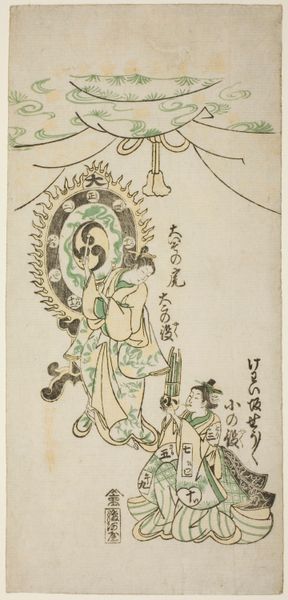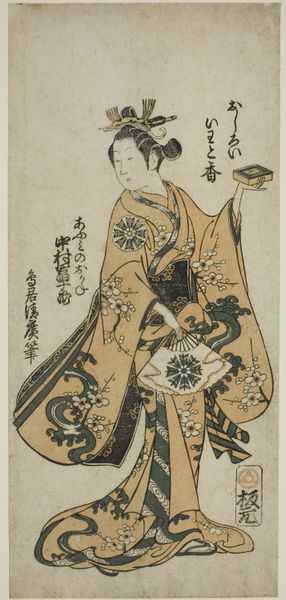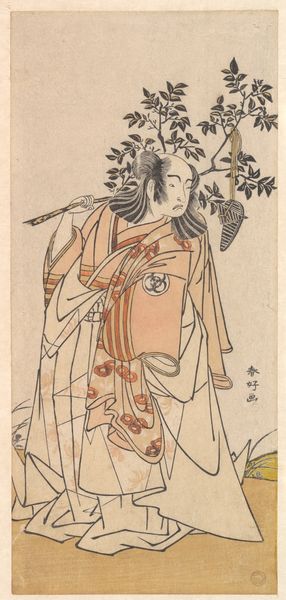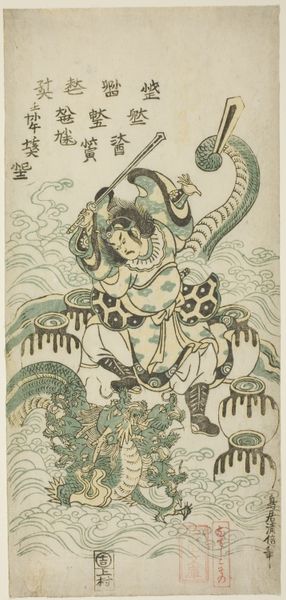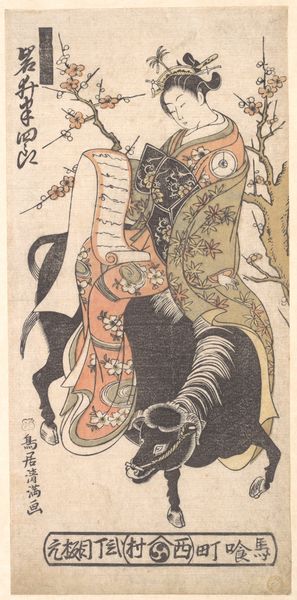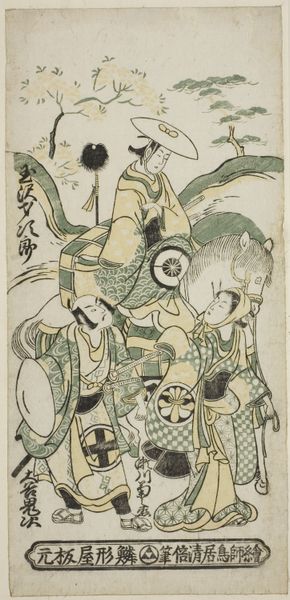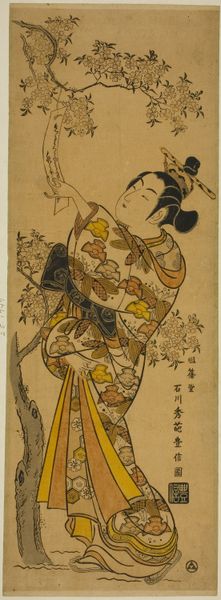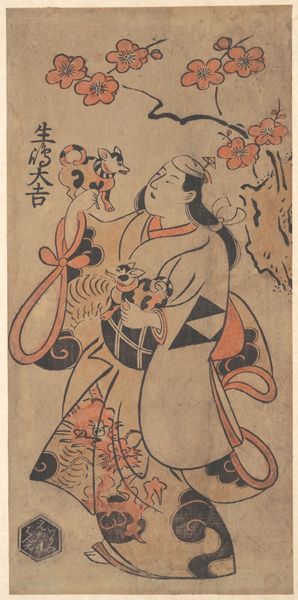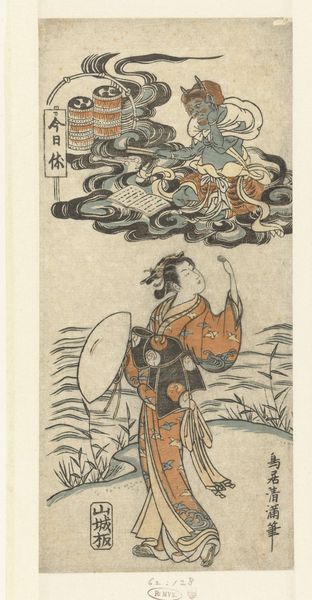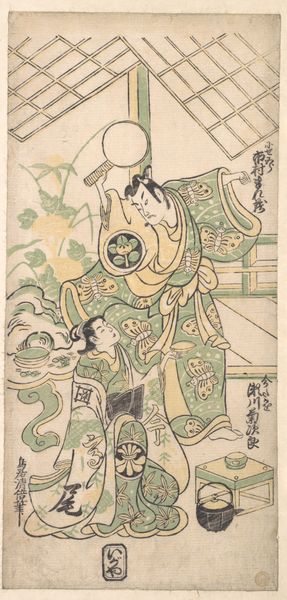
print, woodblock-print
#
portrait
#
ink drawing
# print
#
asian-art
#
ukiyo-e
#
figuration
#
woodblock-print
Dimensions: 11 x 5 1/4 in. (27.9 x 13.3 cm)
Copyright: Public Domain
Curator: Ishikawa Toyonobu's woodblock print, "The Dance of the Scarves," created sometime between 1711 and 1785, is quite striking, wouldn’t you agree? Editor: Absolutely, it possesses a remarkable delicacy. There's something dreamlike about the woman's downward gaze and the swirling scarves, as though they represent a separation between internal reflection and social performance. Curator: Observe the deliberate composition, where line dictates form and rhythm. The curving scarves echo the plum blossoms and the soft, curvilinear folds of her kimono, all guiding the viewer's eye in a graceful, unbroken path. The print demonstrates the refined skill of ukiyo-e. Editor: Yes, but that very grace can also be seen as confining. The beauty of the image naturalizes gendered expectations for feminine comportment during that time period. Is she dancing for pleasure, or performance for a male spectator? The trailing scarves both liberate and bind. Curator: It's a masterful display of line, color, and form, a snapshot of feminine grace rendered in a sophisticated interplay between two-dimensionality and depth that captures the ethereal beauty. It elegantly articulates cultural standards. Editor: I think we also need to acknowledge the cultural narratives underpinning ukiyo-e's creation. The image is striking because it promotes the expectations of Japanese female virtue and duty through art under a male-dominant society, but the individual interpretation always remains subjective. This artwork becomes an intimate, yet historical, portrayal. Curator: I suppose we could view the art this way. In my mind, Toyonobu creates a study on balance. A moment of fleeting beauty—contained by its artistic construction. Editor: It is an object of beauty, certainly—but its beauty exists within a specific historical context of objectification and the performativity of identity. A constant state of push-and-pull between image and narrative. Curator: Precisely. Editor: Indeed, the way this artwork has prompted our exchange really illuminates our own situated positionality.
Comments
No comments
Be the first to comment and join the conversation on the ultimate creative platform.
